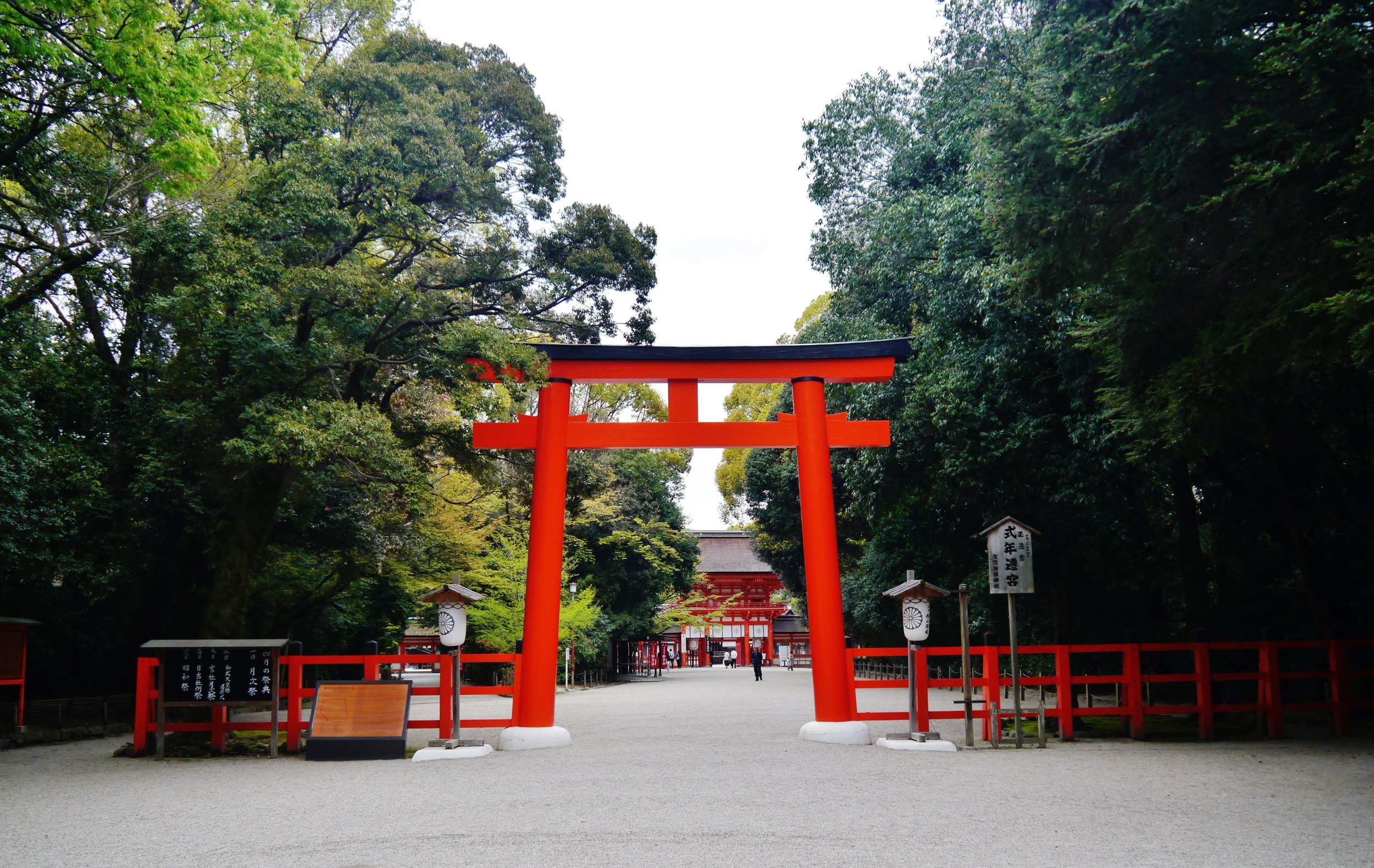Kyoto—3 Historical Places to Visit
Origins: Heian-kyō
Although activity in this region dates as far back as the Paleolithic times, not much is known before the 6th century AD.
It’s during this century that one of the oldest Shinto shrines in all of Japan, the Shimogamo Shrine, was built as a protector of the city. Shimogamo Shrine, set in an ancient forest, was built before Kyoto became the imperial seat of power. Shimogamo Shrine was a place of imperial patronage and Emperor Kanmu visited the shrine.
In 794, Kyoto (then known as Heian-kyō) was chosen by Emperor Kanmu as his new capital.
The original city was laid out following Chinese feng-shui. It was modeled after ancient Chinese capital Chang’an (present-day Xi’an). The emperors of Japan ruled here for the next eleven centuries.
It’s during this Haein (peaceful) period from 794 - 1185 that brings us to our first building.
Shimogamo by Zairon CC 4.0
1. Byōdō-in (Temple of Equality)
Located just outside Kyoto, Byōdō-in was originally built in 998 as a villa for a nobleman.
In 1053, his son Fujiwara no Yorimichi, converted the property to a Buddhist temple after his father’s death, and the Phoenix Hall was added. The Phoenix Hall gets its name from the two phoenixes facing each other on the roof. Although the entire building is representative of this mythical bird.
The wooden building itself is an exceptional example of architecture from the Haein period.
But what’s inside is equally as important.
Inside the Phoenix Hall are treasures of Japanese art including an almost 10ft (3m) tall statue of Amida Buddha. The sculpture was built in 1053 by Jōchō, considered to be the best Buddhist sculptor of the entire Haein period.
During the civil war of 1336 many temples in this complex burned down, and only a few survived including the Phoenix Hall. Many restorations have since taken place over the years.
Phoenix Hall by @davidemrich Unsplash
2. Kinkaku-ji (Temple of the Golden Pavilion)
In 1397 another Buddhist temple has similar beginnings as a private residence.
Built for the most powerful man in Japan at the time (Shogun Ashikaga Yoshimitsu). As requested in his will, when he died the pavilion was turned into a Zen Buddhist Temple. All other buildings except the Golden Pavilion in this complex burned down during the civil war of 1467.
However, centuries later, the Temple of the Golden Pavilion wasn’t as lucky.
On July 2nd, 1950 a young 22-year old monk deliberately burned down the pavilion for ‘hatred of beauty’. This event inspired Yukio Mishima’s novel The Golden Pavilion. In 1955, a new building was reconstructed to be as close to the original as possible.
The three storied pavilion is built in three different styles with gold-leaf covering the walls of the top two stories.
The ground floor, the Chamber of Dharma Waters, is built in the palace style from the 11th century. The second floor, the Tower of Sound Waves is in the style of a samurai palace. And the top floor, the Cupola of the Ultimate is designed in distinctively Zen Temple style.
The garden retains much of its 14th century style and a short walk away is Japan’s most famous Zen garden, Ryoanji, laid out in the 15th century.
Golden Pavilion — Ink Drawing by me
3. Nijō Castle
Built as a residence for the Tokugawa Shoguns Nijō Castle was completed in 1626.
This massive undertaking with a total area of 275,000 square meters began in 1601. When all the feudal lords of the region were ordered to contribute to the construction of this castle. Of the total area buildings cover 8,000 square meters (86,000 square feet).
The elaborate castle consists of two parts, the Honmaru (Inner Ward) and the Ninomaru (Second Ward).
Ninomaru Palace built of cypress is decorated with gold-leaf, elaborate wood carvings, and has wall paintings in a famous style of Japanese paintings. Inside Ninomaru Palace along the corridors are ‘nightingale floors’ that make a sound when walked upon. All meant to put the Shoguns wealth on display and impress visitors.
The Tokoguwa Shoguns used Edo (present-day Tokyo) as their capital city but Kyoto continued to be the seat of the Imperial Court.
In 1939 Ninomaru Palace was donated to the city and opened to the public the following year. Nijō Castle is the only non-religious building to be included among the 17 buildings that make up the Historic Monuments of Ancient Kyoto.
Ninomaru by @eleonoralbasi Unsplash
19th and 20th centuries
Kyoto remained the seat of Imperial power until 1869 when the Great Council of government administration was moved to Edo, now known as Tokyo (Western Capital).
Kyoto was fortunately spared from the bombings during WWII and is still a thriving cultural capital of Japan. All three of these buildings are included in the Historic Monuments of Ancient Kyoto UNESCO World Heritage Sites.
Deep dives
To learn more about the history I’d recommend checking out A Brief History of Japan: Samurai, Shogun and Zen: The Extraordinary Story of the Land of the Rising Sun by Jonathan Clements.
If you want to dive into an ancient text written in 1212 now considered a Japanese literary classic check out Hōjōki a Hermit’s Hut as Metaphor by Kamo no Chōmei. You can see a model of the hut as described in this book in the Kawai Jinja section of Shimogamo Shrine.
And lastly one for the kiddos, Ancient Japan for Kids: A Captivating Guide to Ancient Japanese History from Prehistory to the Heian Period by Captivating History.
*As an Amazon Associate I earn from qualifying purchases.





